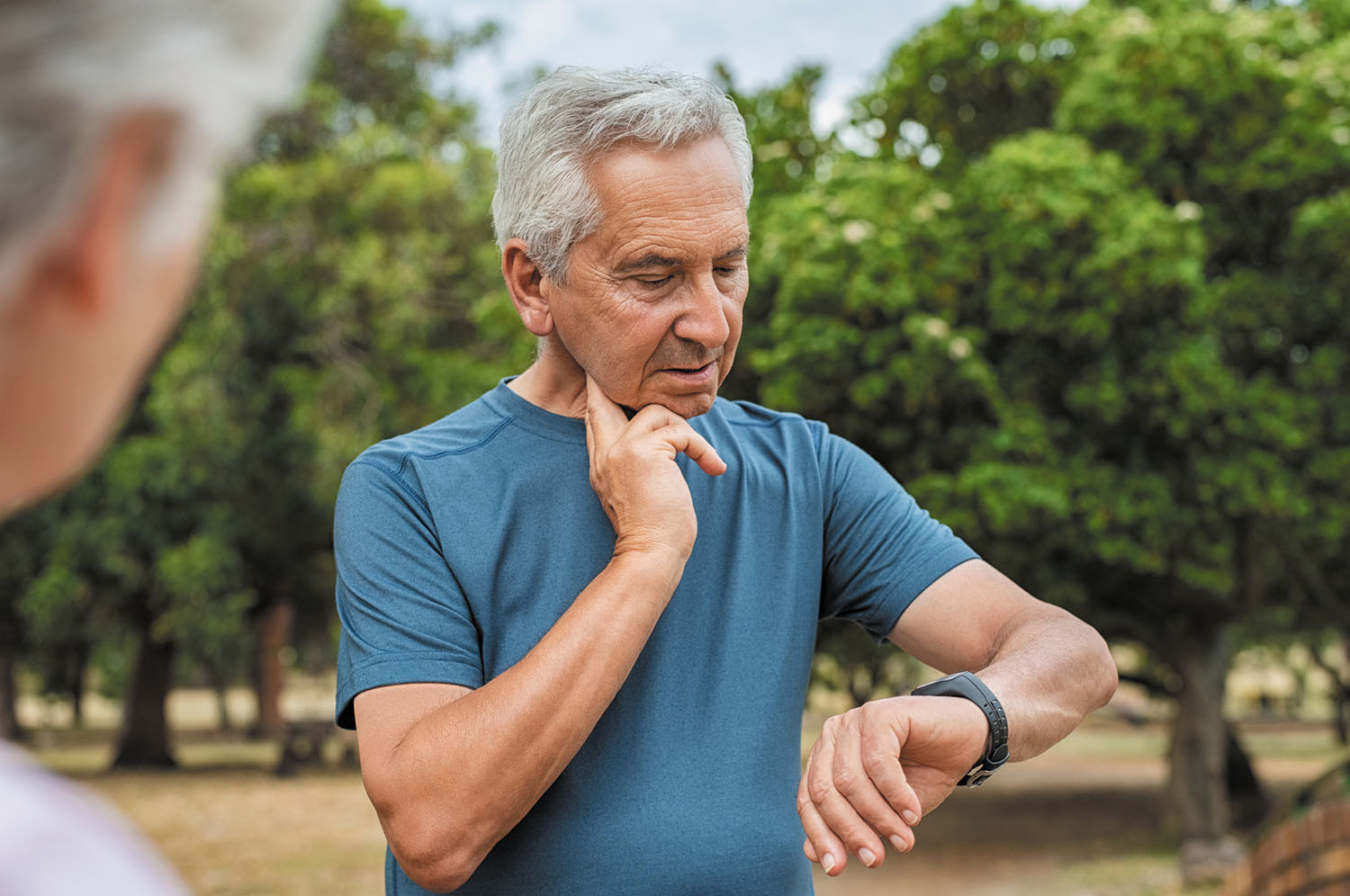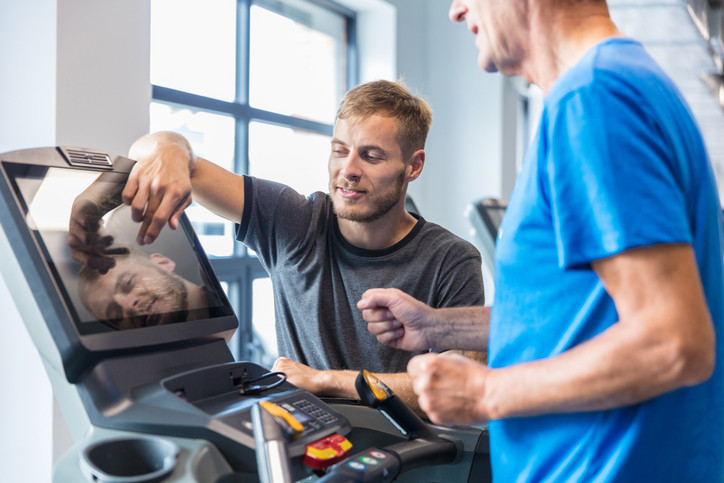
5 timeless habits for better health

What are the symptoms of prostate cancer?

Is your breakfast cereal healthy?

When pain signals an emergency: Symptoms you should never ignore

Does exercise give you energy?

Acupuncture for pain relief: How it works and what to expect

How to avoid jet lag: Tips for staying alert when you travel

Biofeedback therapy: How it works and how it can help relieve pain

Best vitamins and minerals for energy

Should you take probiotics with antibiotics?
Exercise & Fitness Archive
Articles
Straight talk on planking
Your core muscles are your body’s foundation, and the plank pose is a great exercise to do to help build core strength—it’s challenging but not complicated. Here’s everything you need to know to plank correctly.
Target heart rate on a beta blocker
Ask the doctor
Q. Your article about interval training in the September issue suggests a target heart rate of at least 80% of your maximum heart rate during the high-intensity intervals. But what about people like me who take drugs such as metoprolol, which lowers the heart rate? Should I adjust my target heart rate for exercise?
A. Metoprolol (Lopressor, Toprol) belongs to a class of drugs known as beta blockers. As you mentioned, these drugs reduce your heart rate; they also lower blood pressure. They work by blocking the effects of the hormone epinephrine (also known as adrenaline), causing your heart to beat more slowly and with less force. These drugs are often prescribed for people who have had a heart attack, as well as those with heart failure, atrial fibrillation, or angina.
Give your heart health a lift
Cardio not your exercise of choice? Weight training for an hour per week might appeal to you.
Cardio (aerobic) exercise is often touted as the exercise of choice for improving heart health. After all, a body of research supports how it can help lower blood pressure and cholesterol levels, reduce plaque buildup to improve blood flow, and help maintain a healthy weight.
Guidelines recommend that older adults get at least 150 minutes of moderate-intensity aerobic activity per week. But what if you can't do regular cardio because of health reasons or limitations — or you simply don't like cardio exercise?
Six activities can help obese people lose weight and keep it off
In the journals
Even if obesity runs in your family, certain activities may help you lose the weight and keep it off, according to a study published online Aug. 1, 2019, by PLOS Genetics.
Researchers recruited more than 18,000 adults ages 30 to 70 and examined their individual genes and exercise routines. Genetic profiles were created from blood samples that looked for certain gene variants related to obesity. Exercise was defined as at least 30 minutes of activity performed three times a week.
Do you really need to take 10,000 steps a day for better health?
A new study says you might not have to walk far to see benefits.
If you've invested in a fitness tracker, chances are you've heard that you should take 10,000 steps a day for better health. If that sounds daunting, there's good news: a study published online May 29 by JAMA Internal Medicine found that you may able to reap health benefits by taking half that number of steps each day.
Researchers found that in older women, taking as few as 4,400 steps per day was associated with a 41% lower risk of dying during the study period when compared with women who walked 2,500 steps a day or fewer. In addition, it didn't seem to matter if the women took those steps power walking or just moving around the house.
Can I reverse prediabetes?
Ask the doctors
Q. My doctor recently told me I have prediabetes. Is this condition reversible?
A. Yes, it is possible to reverse prediabetes. Prediabetes is a condition that affects millions of Americans. The CDC estimates that as many as one in every three American adults has the condition, which is defined as having blood sugar that is elevated, but not high enough to meet the threshold for diabetes. Left untreated, prediabetes can progress to diabetes, a condition in which your body is not able to absorb glucose for energy properly, causing blood sugar to rise. If it's not managed properly, diabetes can lead to a number of health problems, from heart attack and stroke to blindness, kidney problems, and infections, among others. But making some lifestyle changes can reduce the risk that your prediabetes will develop into diabetes.
Keep your health habits on track during the holidays
Put the focus on friends, family, and fun, instead of food.
It's November, time for Thanksgiving and the start of the holiday season, which is also known as the time of year when healthy habits slide off track and waistbands get tighter.
"The truth is, people do tend to abandon healthy habits during the winter," says Dr. Beth Frates, clinical assistant professor of physical medicine and rehabilitation at Harvard Medical School. Blame the cold weather that keeps you inside and makes you feel sluggish, or the parade of holiday parties. Who wants to stick to a diet or trudge to the gym?
Can exercise help treat anxiety?
Millions of Americans report having an anxiety disorder. Evidence shows engaging in any sort of physical activity is one of the best ways to ease symptoms of anxiety. Regular activity is best, but even a single bout can help.
Should I participate in a cardiac rehabilitation program?
For people who have had a heart attack or heart surgery, or been diagnosed with angina or a specific kind of heart failure, participating in a cardiac rehabilitation program has medically proven benefits to overall health and quality of life.
How many steps should I take each day?
Ask the doctor
Q. My smartphone tells me how many steps I take each day, but I don't know how many I should shoot for. What should my goal be?
A. You've read in these pages and elsewhere that regular physical activity reduces the risk of heart disease, type 2 diabetes, obesity, and possibly several types of cancer. Regular exercise also reduces the risk of premature death. No medicine yet invented can claim such benefits. Probably the advice you've heard most often is that moderate exercise — like a brisk walk (at about 3 mph) for 30 minutes at least five times a week — will bring all of the above health benefits.

5 timeless habits for better health

What are the symptoms of prostate cancer?

Is your breakfast cereal healthy?

When pain signals an emergency: Symptoms you should never ignore

Does exercise give you energy?

Acupuncture for pain relief: How it works and what to expect

How to avoid jet lag: Tips for staying alert when you travel

Biofeedback therapy: How it works and how it can help relieve pain

Best vitamins and minerals for energy

Should you take probiotics with antibiotics?
Free Healthbeat Signup
Get the latest in health news delivered to your inbox!
Sign Up











